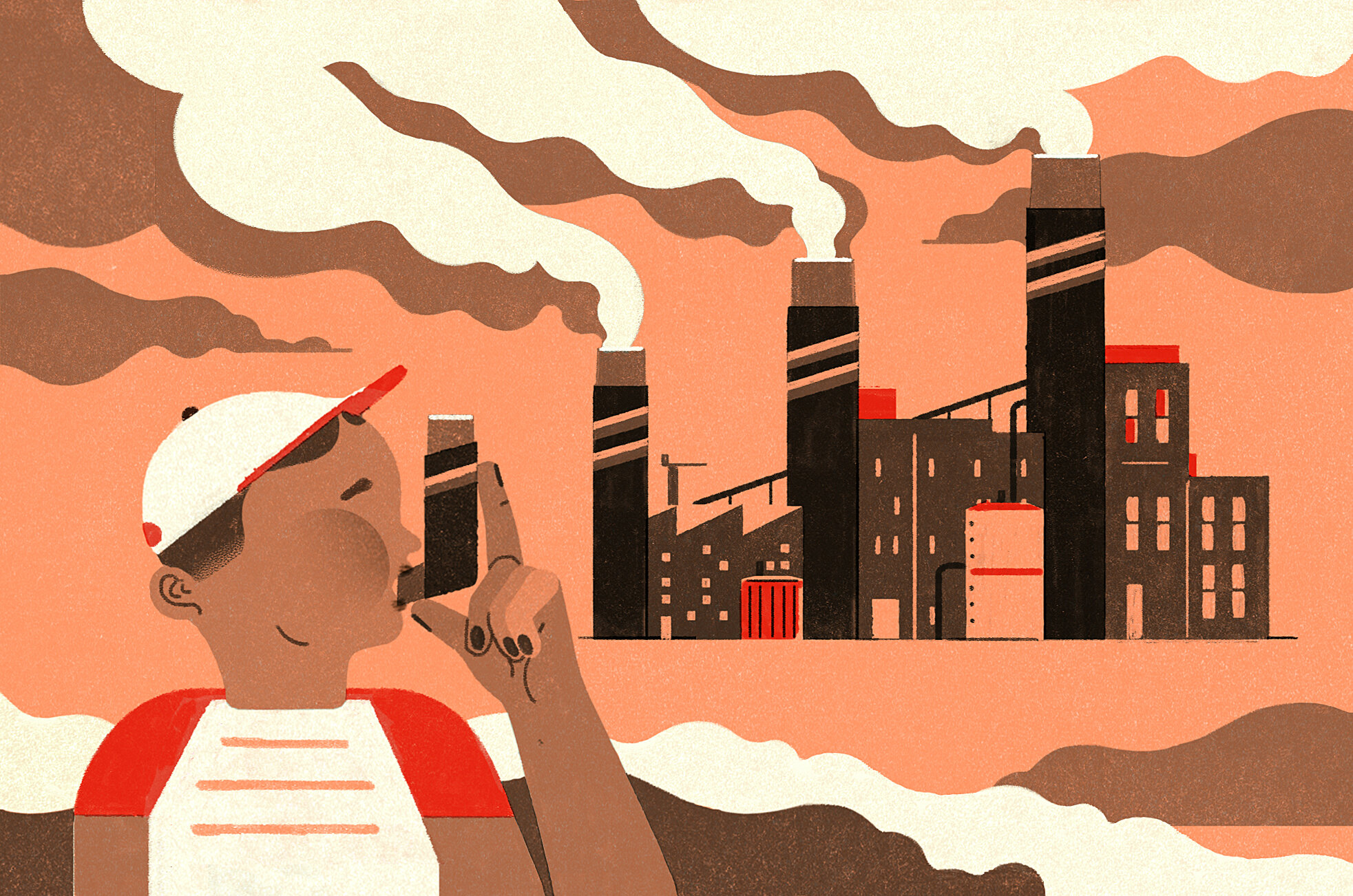
The complex interplay between the environment and human health is becoming increasingly apparent, and perhaps nowhere is this more evident than in the delicate systems of our lungs. The air we breathe is a direct conduit to our internal biological machinery, and as the composition of that air shifts under the influence of a changing climate, so too does our vulnerability to a range of respiratory ailments. It’s no longer a matter of simply managing existing conditions; it’s about contending with a new set of environmental stressors that are intensifying old problems and creating new ones. The subtle changes in atmospheric conditions, temperature, and precipitation patterns are not just abstract scientific metrics; they are tangible threats to the very act of breathing.
The subtle changes in atmospheric conditions, temperature, and precipitation patterns are not just abstract scientific metrics.
One of the most immediate and widespread impacts of climate change on respiratory health is the degradation of air quality. Rising global temperatures contribute to the formation of ground-level ozone, a harmful air pollutant. Ozone, a key component of smog, is not emitted directly but forms when pollutants from cars and power plants react with sunlight and heat. Higher temperatures mean more frequent and intense ozone events, particularly in urban areas. Inhaling ozone can irritate the airways, trigger asthma attacks, and cause chest pain, coughing, and shortness of breath. For individuals with pre-existing conditions like asthma or chronic obstructive pulmonary disease (COPD), exposure to elevated ozone levels can be particularly dangerous, leading to hospitalizations and a significant decline in lung function.
Rising global temperatures contribute to the formation of ground-level ozone, a harmful air pollutant.
Beyond ozone, the particulate matter that makes up air pollution is another significant concern. Climate change is a key driver of wildfires, which are becoming more frequent and severe in many parts of the world. These fires release massive plumes of smoke filled with fine particulate matter, known as PM2.5, which is small enough to travel deep into the lungs and even enter the bloodstream. Exposure to wildfire smoke can cause inflammation, reduce lung function, and exacerbate a variety of respiratory conditions. Even for healthy individuals, prolonged exposure can lead to coughing, wheezing, and irritation. The geographical reach of this pollution is extensive, with smoke from fires in one region affecting air quality thousands of miles away.
Exposure to wildfire smoke can cause inflammation, reduce lung function, and exacerbate a variety of respiratory conditions.
The changing climate also has a profound effect on the distribution and potency of allergens. Warmer temperatures and increased levels of atmospheric carbon dioxide are extending pollen seasons and stimulating plants to produce more potent allergens. This means that people with hay fever and allergic asthma are facing longer, more intense allergy seasons. A longer pollen season increases the overall exposure to allergens, making it more likely for susceptible individuals to experience symptoms. Additionally, certain plants, like ragweed, respond to higher CO2 levels by producing more pollen per plant, adding to the total allergen load in the air. This shift in plant biology is creating a more challenging environment for millions of allergy sufferers.
Warmer temperatures and increased levels of atmospheric carbon dioxide are extending pollen seasons and stimulating plants to produce more potent allergens.
Extreme weather events, which are becoming more common and severe, pose a unique set of risks. Flooding, for example, creates ideal conditions for the growth of mold and fungi. These microscopic organisms can release spores into the air, which, when inhaled, can trigger severe allergic reactions and asthma attacks. Mold exposure is a particular concern in homes and buildings that have been damaged by water, as the problem can persist long after the floodwaters have receded. Furthermore, dust storms and droughts, exacerbated by climate change, can transport pathogens and irritants across vast distances, contaminating the air with a mixture of soil, microbes, and pollutants that can be detrimental to respiratory health.
Flooding, for example, creates ideal conditions for the growth of mold and fungi.
Another aspect of climate change’s impact on respiratory health is the alteration of infectious disease patterns. Warmer, more humid climates can expand the range of vectors, such as mosquitoes, that carry infectious diseases. While not a direct respiratory threat in all cases, a compromised immune system from a vector-borne illness can leave an individual more vulnerable to respiratory infections. Furthermore, climate-related shifts in population density and movement can increase the risk of infectious disease transmission. For instance, people displaced by extreme weather events may be forced into crowded living conditions, which are ripe for the spread of respiratory illnesses like tuberculosis and influenza.
For instance, people displaced by extreme weather events may be forced into crowded living conditions.
The indirect effects of climate change also contribute to the respiratory burden. Food and water insecurity, a direct consequence of climate instability, can lead to malnutrition. A body weakened by a lack of proper nutrition is less able to mount an effective immune response, making it more susceptible to a range of infections, including those that affect the respiratory system. Children, in particular, are at a heightened risk, as malnutrition can stunt lung development and increase their susceptibility to chronic respiratory diseases later in life. This creates a vicious cycle where a compromised environment leads to compromised health, which in turn makes individuals more vulnerable to further environmental threats.
A body weakened by a lack of proper nutrition is less able to mount an effective immune response.
Understanding these connections is essential for public health planning. Healthcare systems need to adapt to the new reality of climate-driven respiratory threats. This includes implementing robust air quality monitoring systems and developing early warning systems for events like heatwaves, wildfires, and pollen spikes. It also means educating the public on how to protect themselves during these events, whether through staying indoors, using air purifiers, or having a plan in place to manage their respiratory conditions. The medical community is increasingly recognizing that treating respiratory disease now involves not just managing symptoms but also addressing the environmental factors that are driving the problem.
The medical community is increasingly recognizing that treating respiratory disease now involves not just managing symptoms.
Moreover, the effects are not felt equally across all populations. Vulnerable communities, including children, the elderly, and those with pre-existing health conditions, bear a disproportionate burden. People living in low-income neighborhoods, which are often located near industrial areas and have less green space, are exposed to higher levels of air pollution. They may also lack the resources to mitigate these risks, such as access to air conditioning or medical care. This highlights the issue as not only an environmental problem but a matter of social and health equity.
This highlights the issue as not only an environmental problem but a matter of social and health equity.
The cumulative effect of these various stressors on the respiratory system is significant. An individual’s lungs may be simultaneously coping with increased ozone levels, a longer pollen season, and the occasional exposure to wildfire smoke. This constant assault can lead to chronic inflammation and a decline in overall lung function, even in people who were previously healthy. For those with a history of respiratory issues, the challenges are compounded, making it difficult to find relief and maintain a good quality of life. The problem is not one single factor but the synergistic and cascading effects of multiple climate-related changes.
The cumulative effect of these various stressors on the respiratory system is significant.
The health of our lungs is intrinsically linked to the health of our planet. Ignoring the growing evidence of climate change’s impact on respiratory health is no longer an option. It requires a multi-faceted approach that addresses both the root cause of climate change and the direct health consequences it is creating.
